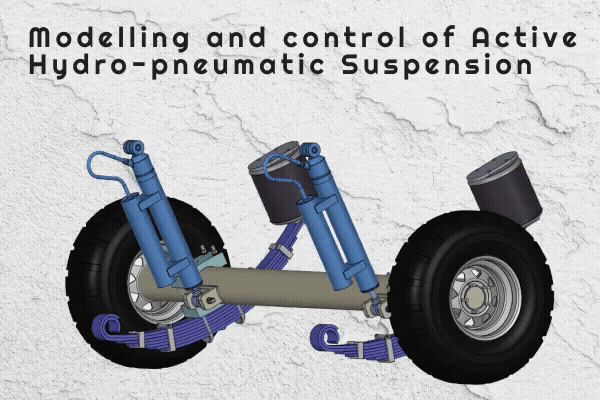Modeling and control of Active Hydro-pneumatic Suspension

The development of automobile suspension systems has
been evolved due to benefit from simulation tools and co-
evolution of electronics and microprocessor control to get the
most efficient and appropriate suspension system for cars and
vehicles.
Suspension systems are generally classified into passive, semi-
active, or active. This classification depending on the amount
of external power required for the system to perform its
function. A traditional passive system comprised of springs
and dampers. Semi-active suspensions use spring and
controlled damper, the damper consumes small amounts of
energy to adjust the damping level. Active suspensions have a
controllable force actuator powered from an external energy
source. Active suspension systems can potentially generate any desired force and so are much more flexible than conventional passive systems.
This Project starts with concise survey and discussion of related
topics of automobile suspension designs and controls. A
mathematical model of the active hydro-pneumatic suspension for dynamic simulation in Simulink is
introduced. The design and characterization of the computer
controlled suspension test-rig, road profile and excitations are
explained. Finally the a PID controller is designed and tuned for optimized performance under various road conditions are performed in SIMULINK.
Contact US
For getting more project details and pricing, please share your contact information.




